Audiovox Uke Bass (2/2)
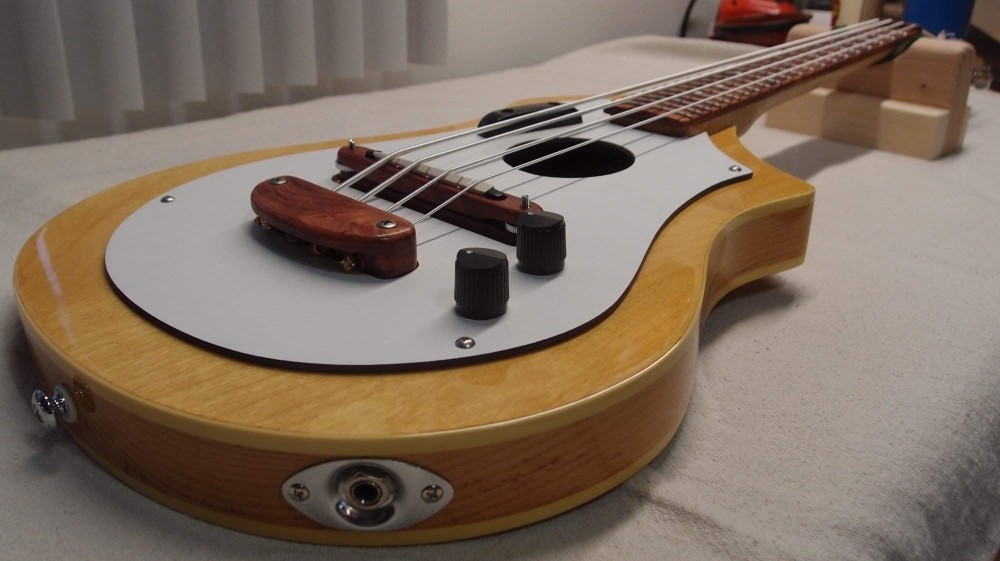
I finally assembled all the parts. I’ve had the body and neck hanging around (literally) for a long time. I had the bridge design already, but wasn’t sure what to do for the tailpiece. Finally, I dreamed up what you see.
The nut, bridge, and tailpiece are all made from scraps of the fretboard wood. It was sold to me as Bubinga, but I doubt it. In fact, the piece was so ugly that I complained and got a refund. Later, I cut around the worst of it for this ultra-short fretboard, which left lots of scrap. I coated the nut with Crazy Glue for reinforcement. The bridge and tailpiece are glue-ups of the 1/4″ fretboard stock, shaped on the belt sander.
The body is maple plywood over a 1″ pine core; the soundhole is real ( looks painted-on. ) The soundhole doesn’t do anything except visually fill up the big blank space. The pickguard is white-painted masonite, as cheap as you can get. I wrapped a vegetable can in sandpaper and whirled it in the hole to get it perfectly round. I painted the interior of the body flat black to make the soundhole pop visually.
The 21.5″ neck is Home Depot maple, with a steel tube truss rod to prevent it from ever warping. The truss rod cover is just for looks. It uses four ‘economy’ guitar tuners; I left the covers off for an old-timey open-gear look.
For electronics, there is a piezo saddle and one of my homemade one-transistor impedance buffers, into passive volume and tone. I fooled around and decided to go with a ‘B’ pot for volume and an ‘A’ pot for tone. A pull on the volume disables the buffer and lets you hear just how bad an unbuffered piezo sounds. Getting at the electronics is a lot of work – you have to remove the tailpiece to get the pickguard off.
The strings are U-Bass Silverplate round-wound. If not for these strings, I would never have built another uke bass. In fact, I would have taken apart my Strat-uke-bass and re-used the body for something else. I just can’t stand the regular rubber uke bass strings. These feel and sound more like normal bass strings. The sizes are .050-.065-.095-.110, almost like regular strings. You lose the double-bass sound, but they are much more playable. These strings use a non-magnetic metal winding around a nylon core. They are relatively insensitive to bending and intonation, and more prone to rolling under your fingers than metal strings. The nylon core is going to take several weeks to stretch and stabilize, until then it is constant re-tuning. The entire set went a half-step flat overnight.
These strings probably have about the same tension as nylon classical guitar strings, so you can get away with a lot in terms of securing them. Bass tuners are complete overkill, and the two screws securing the tailpiece are more than enough. My only worry is that the bridge may sag over time. My original was made of walnut, which proved to be not strong enough. Whatever this wood is, it is much stronger than walnut. In fact, I started making a replacement bridge for that one.
This bass cost next to nothing to build. The most expensive part by far is the strings.




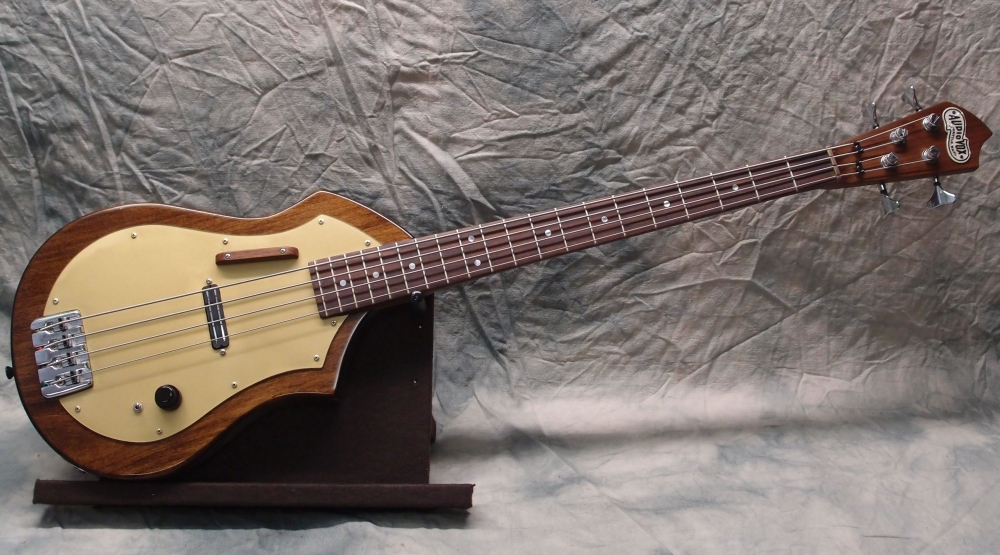
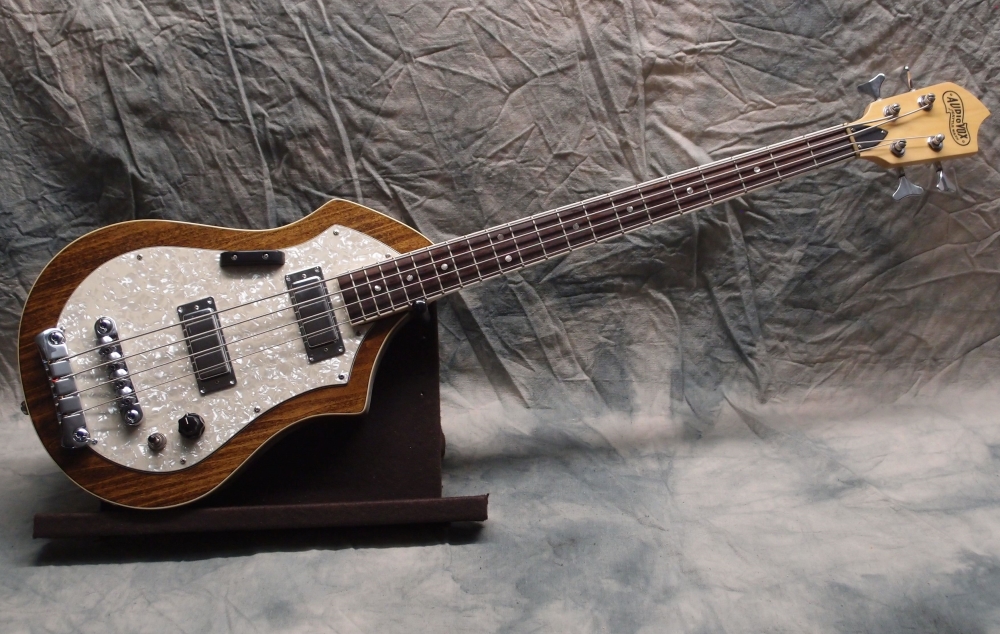
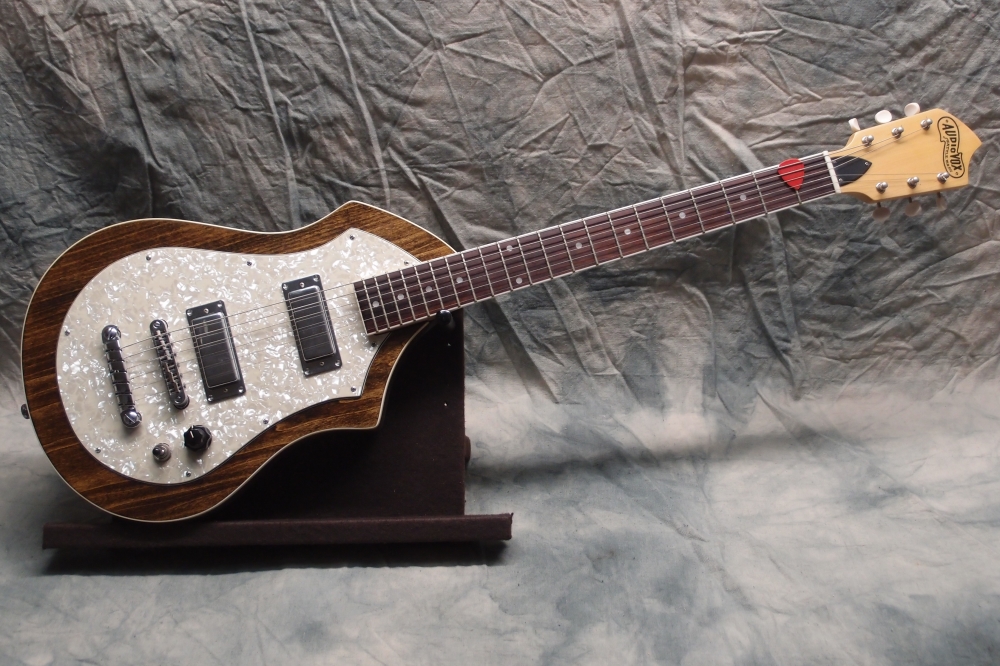
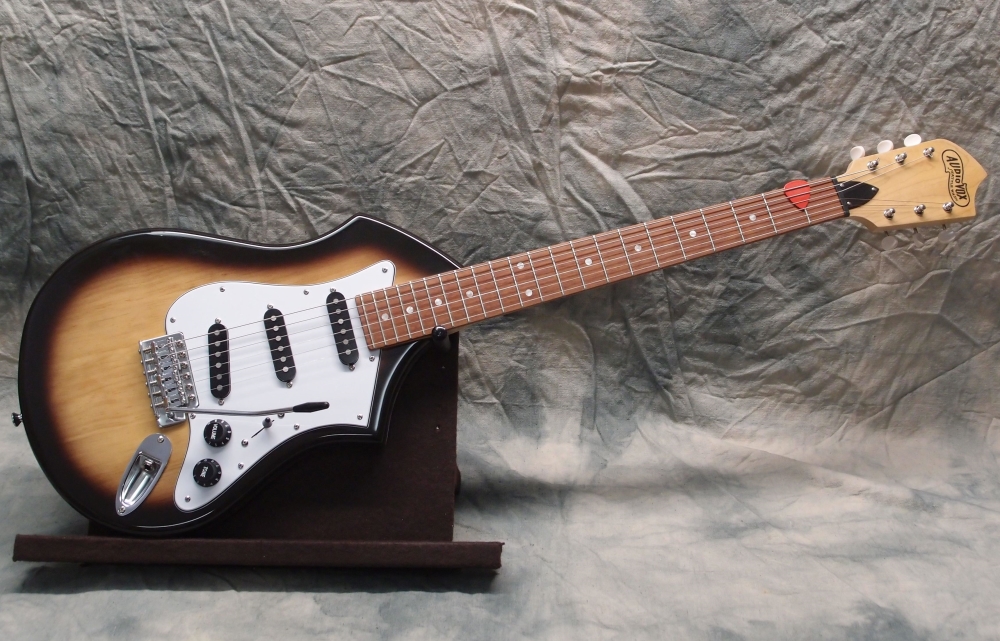

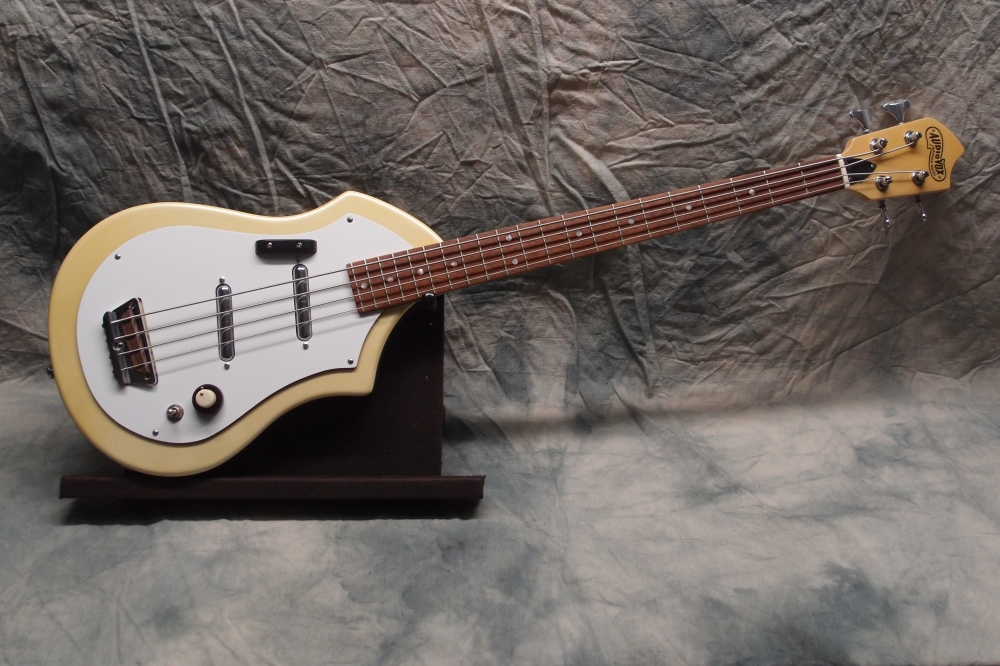
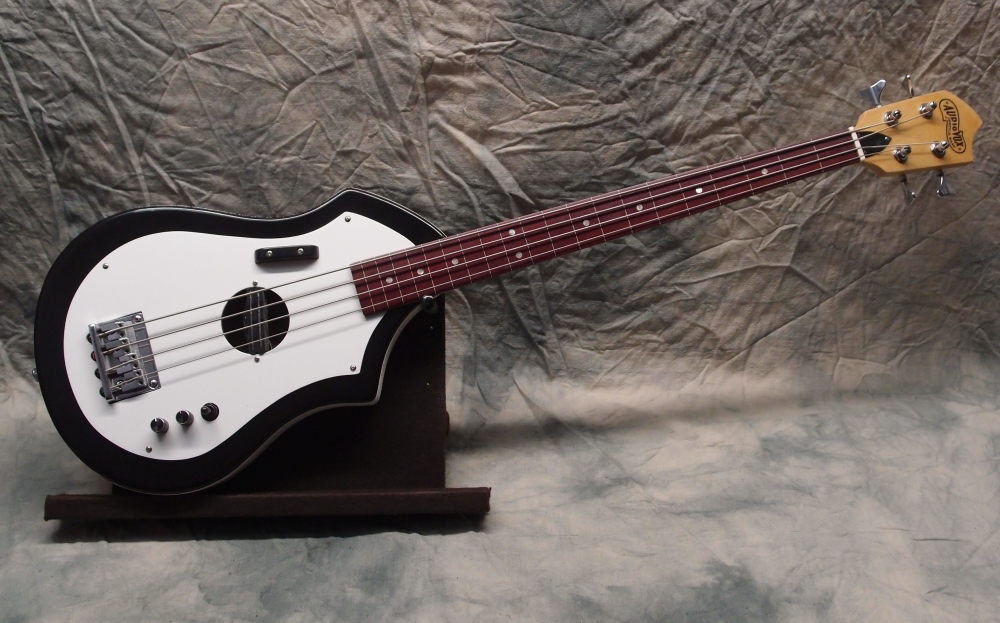
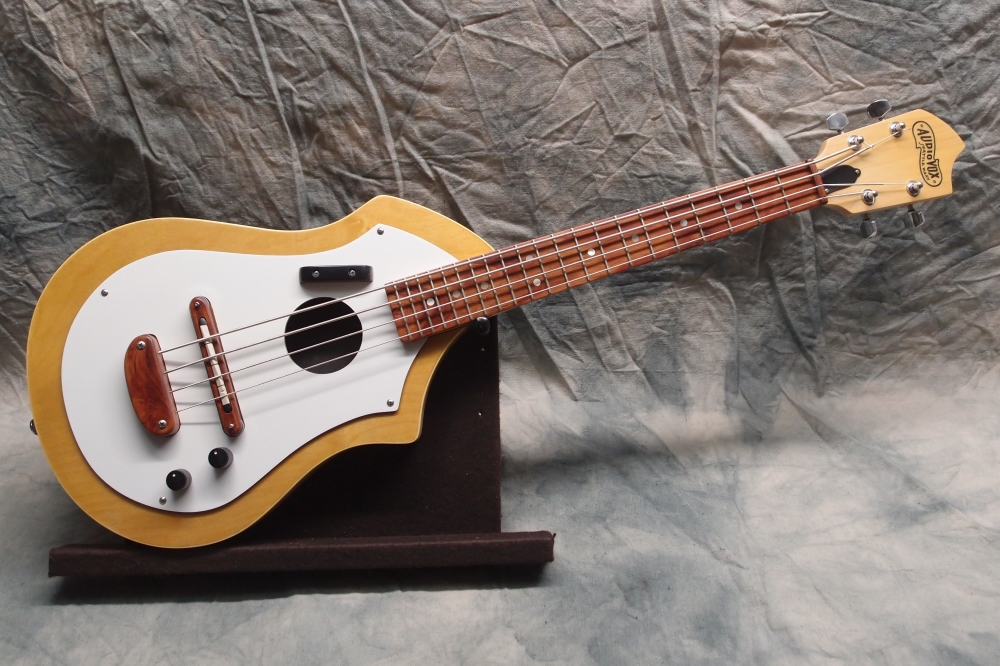
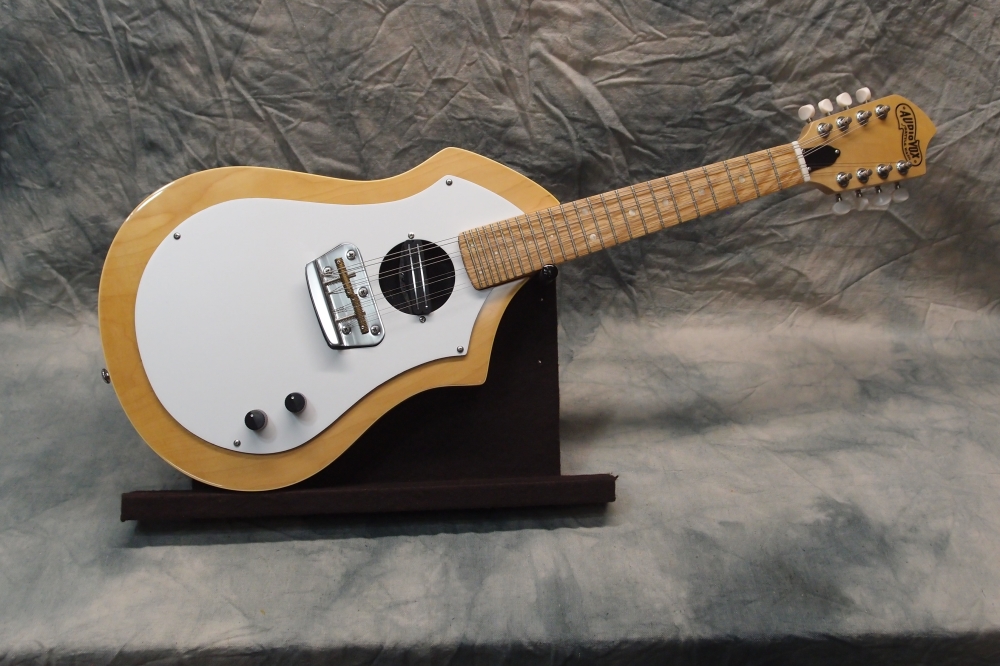
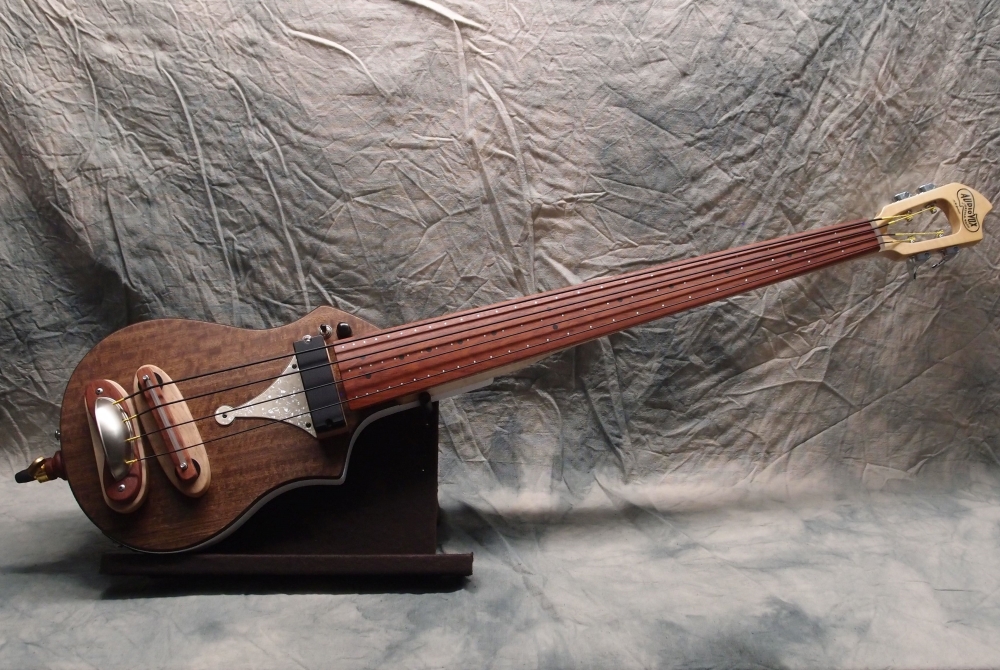

Questions or Inquiries?
Just want to say Hello? Sign the .